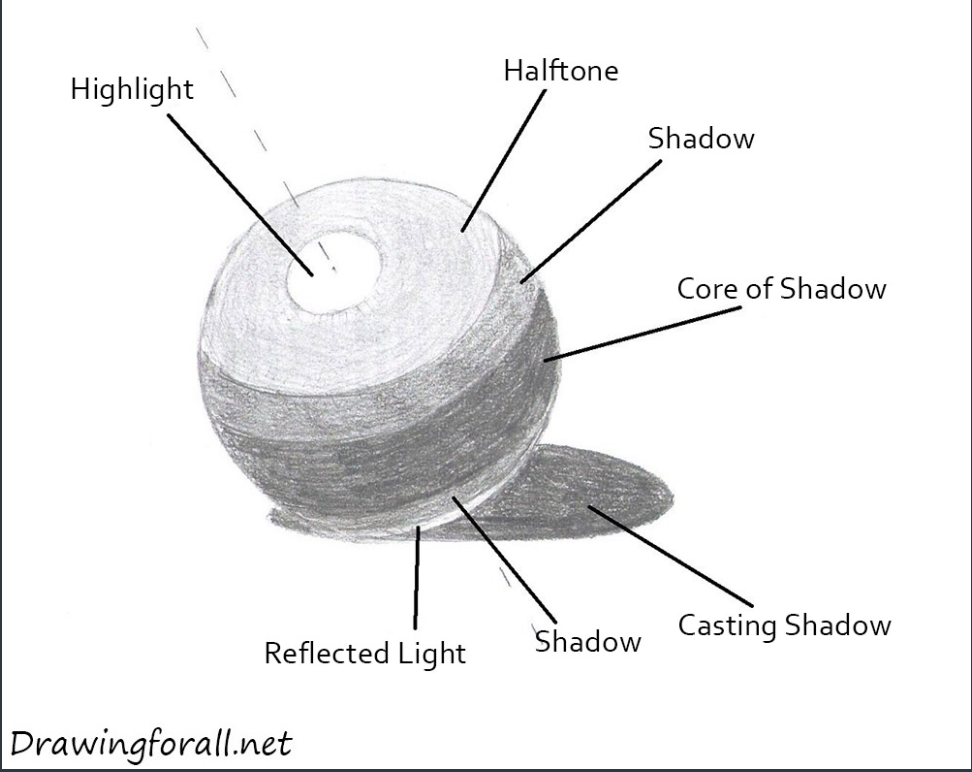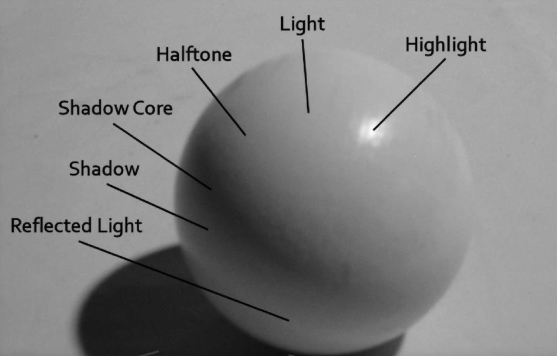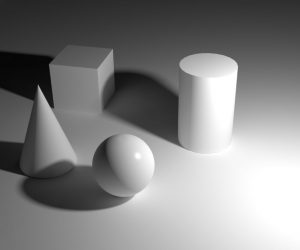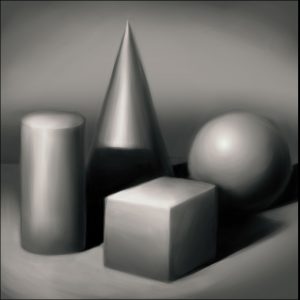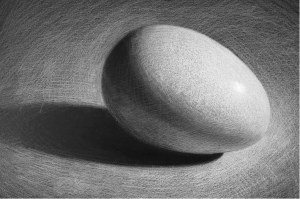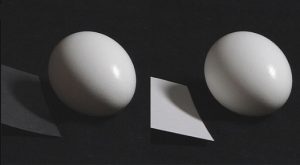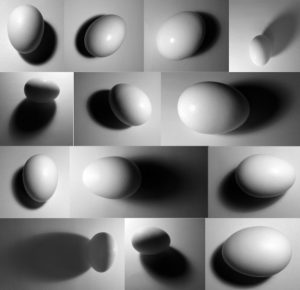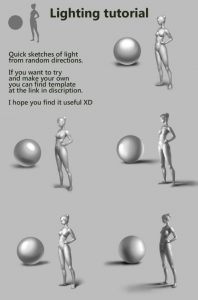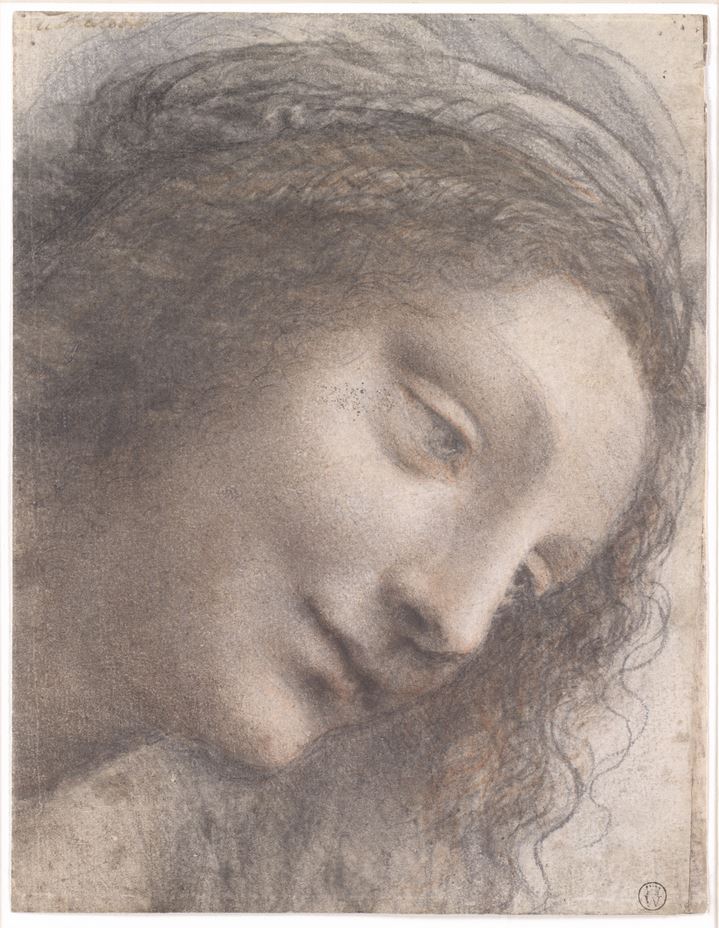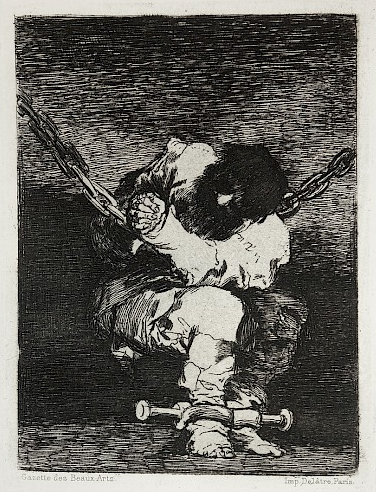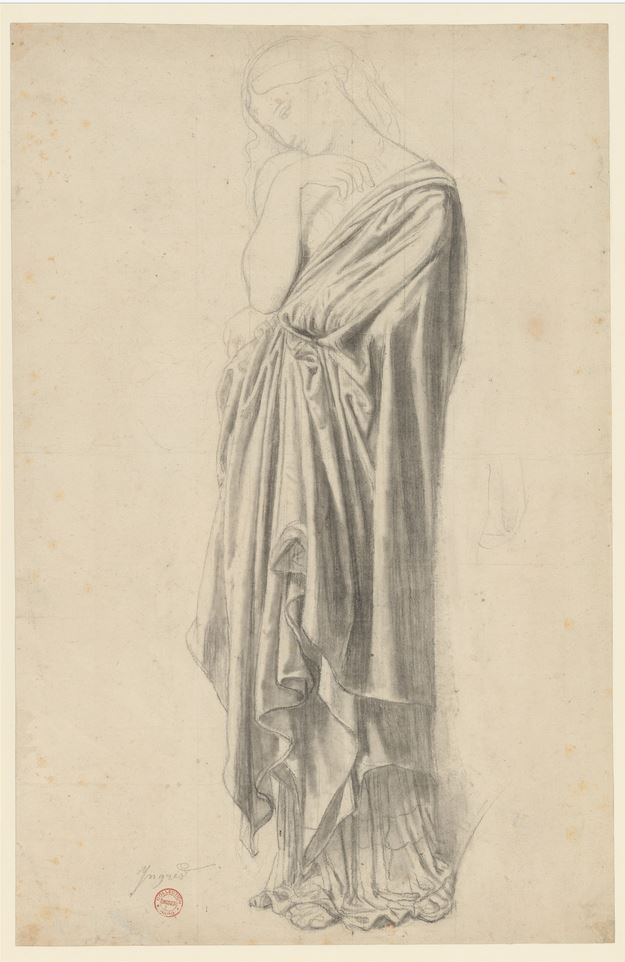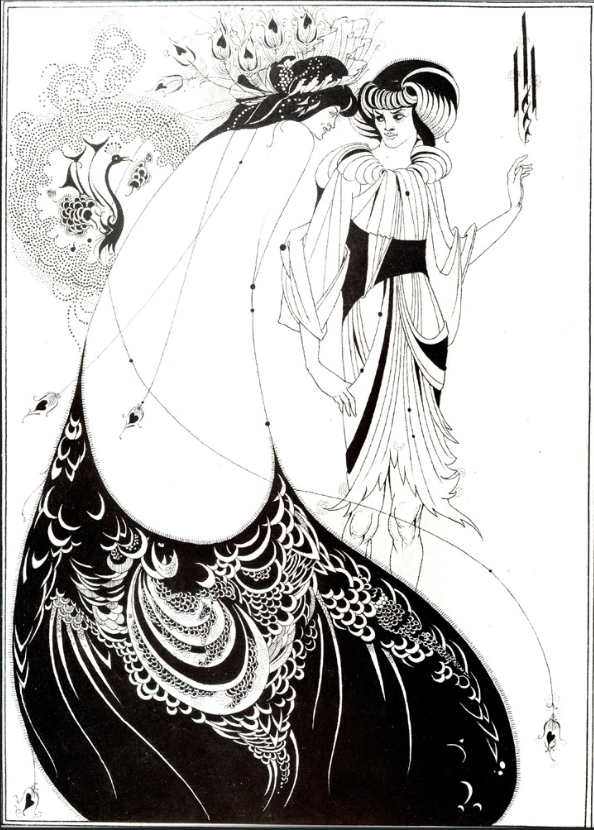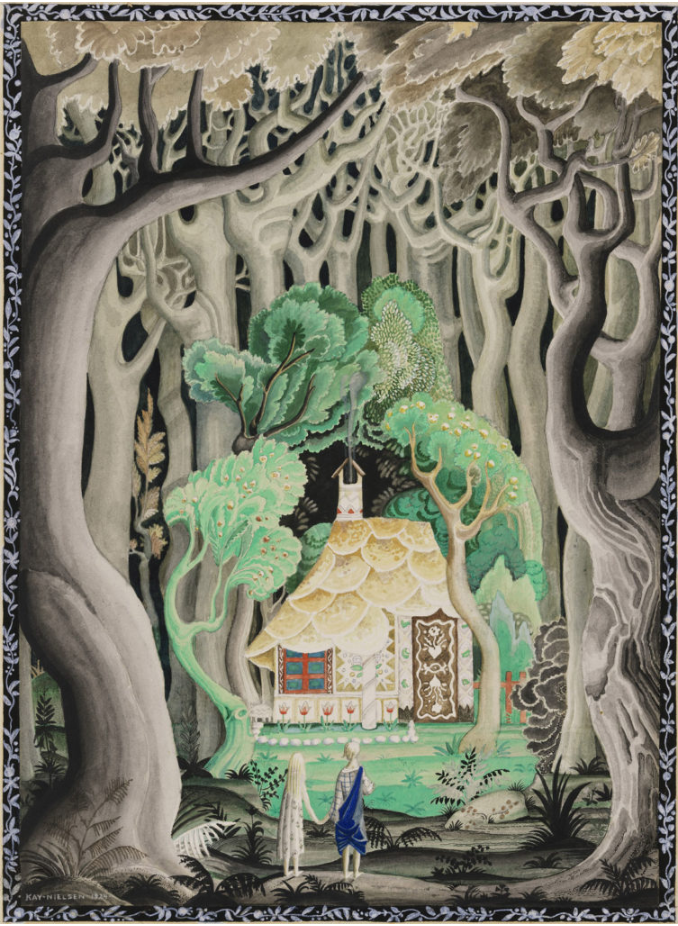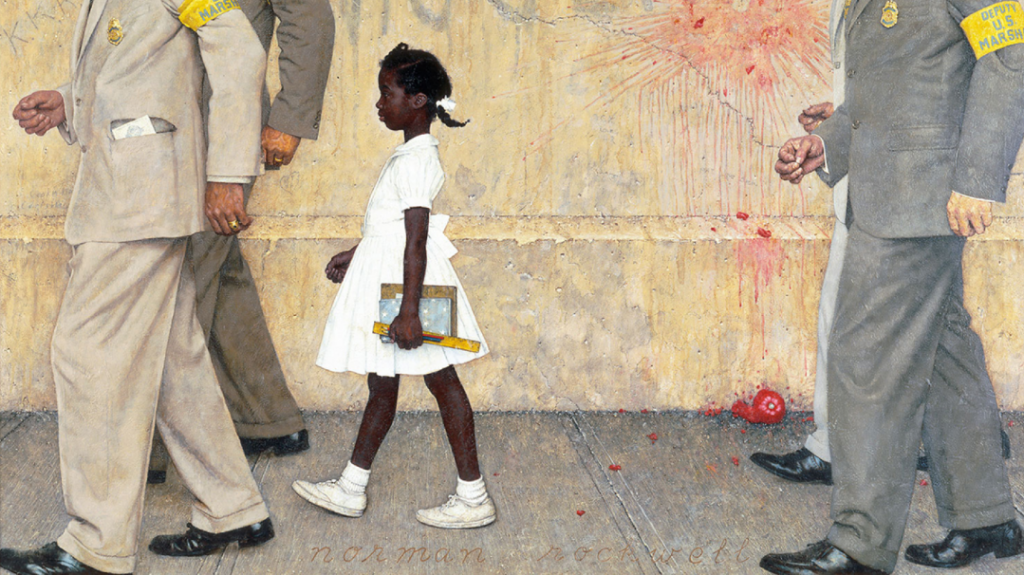Contents
Overview:
Depicting light and shadow helps create volume and 3-dimensional space, as well as emotion, clarity of artistic intent and 2-dimensional design. To use light and shadow effectively it is important to understand that light travels in a straight line and is reflected off surfaces at an intensity dependent on how directly that surface faces the light source. Form shadows are created on an object when a surface faces away from the light source, again dependent on the degree to which the surface faces away, and cast shadows are created on other surfaces blocked from the light by the object.
Diagram of Lighting Components:
Though the labels in both diagrams are not exactly the same, the principle is the same:
- Form Shadows:
- Highlight: reflected light, moves depending on viewer’s location
- Light: area being hit by the light, dependent on position of the light
- Halftone: color of the object
- Shadow: transition between shadow situations
- Shadow Core: deep shadow
- Reflected light: light bouncing off surface below/behind object
- Cast Shadow:
- Area being blocked from light by object, and not on object itself
Examples:
YouTube Videos:
General video about lighting from MaryDoodles.com:
Explanation of the seven values from www.proko.com:
Examples: Artists and Illustrators:
Recording of Class Meeting:
Click HERE [use hyperlink] to view the recording of our (class date) class.
